Celestron Origin vs Unistellar Odyssey Pro: 10 Second Summary
- The Celestron Origin is a superior astrophotography telescope to the Unistellar Odyssey Pro, but is bigger, heavier, and requires more work to operate.
- The Unistellar Odyssey Pro has a lower spec telescope and camera, but has a live-view eyepiece, is easier to use, is much smaller and lighter, and with it you can join Citizen Astronomy initiatives.
- They cost exactly the same (unless on sale!)
Why choose the Celestron Origin over the Unistellar Odyssey Pro?
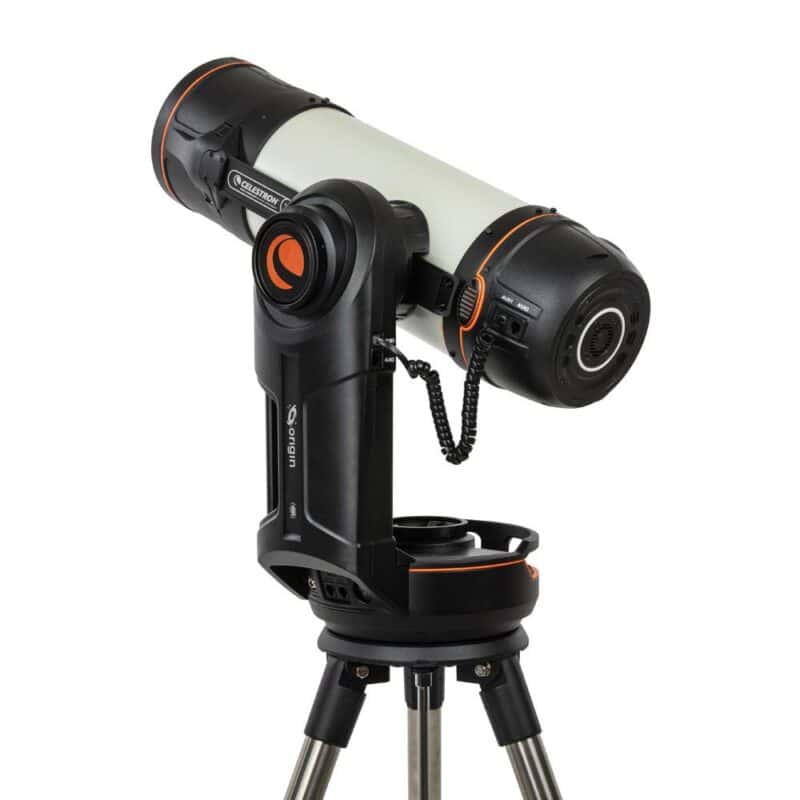
The Celestron Origin is a premium smart telescope from American astronomy manufacturer Celestron that was released in 2024.
The advantages over the Unistellar Odyssey Pro are:
- The Celestron Origin telescope type is a specialist astrophotography type called a Rowe-Ackermann Schmidt Astrograph (RASA) that is well-loved and proven by experienced astrophotographers.
- The telescope has 6-inch aperture and an f/2.2 focal ratio – this is above that of the Unistellar Odyssey Pro and so the images produced will be superior.
- Unlike the Unistellar Odyssey Pro (or any other smart telescope), the mount and camera can be replaced and upgraded in the future.
- The Celestron Origin is the best smart telescope for actual astrophotography and is effectively an off-the-shelf astrophotography setup with telescope, mount, camera and necessary accessories in an easy to use package.
In terms of downsides versus the Unistellar Odyssey Pro:
- It is more than four times the weight of the Unistellar Odyssey Pro and much bigger. Therefore cannot compete with the portability or easy storage.
- The Celestron Origin telescope may require occasional collimation (a form of manual adjustment), but the Unistellar Odyssey Pro does not and so can always be pulled out to use without having to think about any tinkering.
- It does not have the eyepiece of the Odyssey Pro that allows real-time viewing through the telescope
Why choose the Unistellar Odyssey Pro over the Celestron Origin?
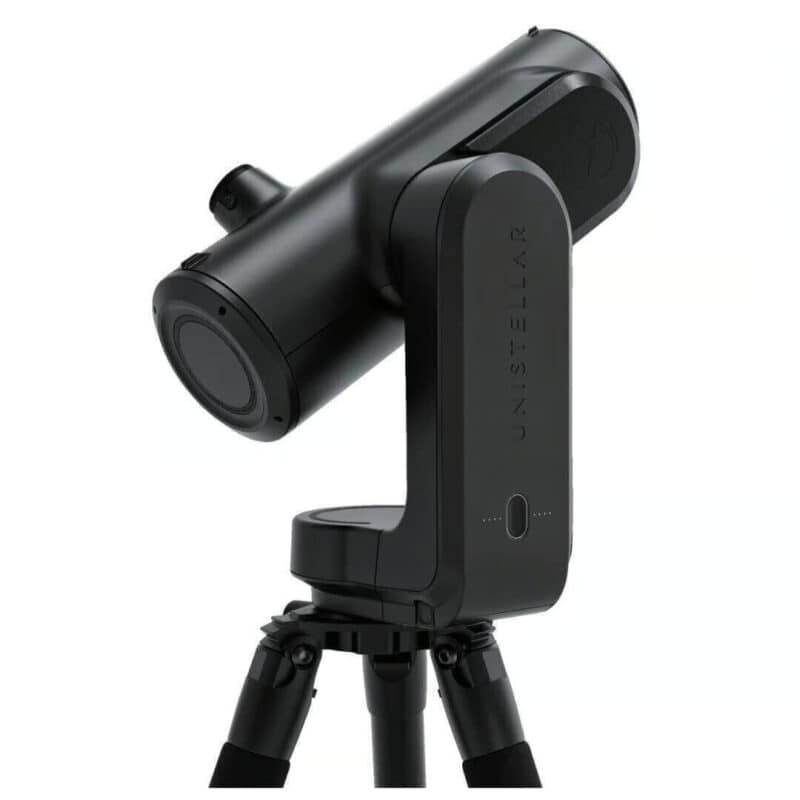
The Unistellar Odyssey Pro is a premium smart telescope from French manufacturer Unistellar that is brand new in 2024.
The main reasons to consider it over the Celestron Origin are:
- The Odyssey Pro’s real-time viewing eyepiece means you can look through the telescope, rather than just view images on your smartphone or other screen. This is particularly good if using with friends or family as you have a more shared experience in taking turns to look through.
- The Unistellar Odyssey Pro is significantly smaller and lighter. This means that you can take it on trips and also that it packs up much more easily for home storage.
- The Unistellar Odyssey Pro will not require collimation and so is easier to just grab and go with. Whilst collimation is not difficult (there are simple tutorials you can follow) it will put off people that would rather have something that they know they can pull out whenever they want and not think about making adjustments.
- With all Unistellar models you can take part in Citizen Astronomy initiatives and join missions to track asteroids and hunt exoplanets.
The main downside versus the Celestron Origin is that it will not be as good an astrophotography telescope.
Telescope Specifications
The Celestron Origin has:
- 152mm (6 inch) aperture
- 335mm focal length
- f/2.2 focal ratio
- 1.27° x 0.85° field of view
The Unistellar Odyssey Pro has:
- 85mm (3.3 inch) aperture
- 320mm focal length
- f/3.8 focal ratio
- 0.56° x 0.75° field of view
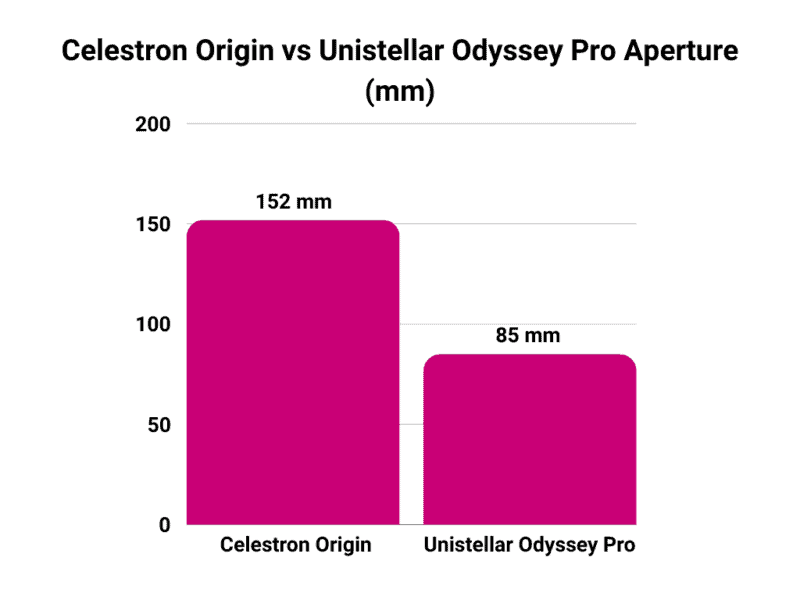
Camera Specifications
The Celestron Origin has a 6.4MP resolution camera of 3096 x 2080 size using a Sony IMX178 sensor and a pixel size of 2.4μm.
The Unistellar Odyssey Pro has a 4.1MP resolution camera of ? size using a Sony IMX615 sensor and a pixel size of 1.45μm.
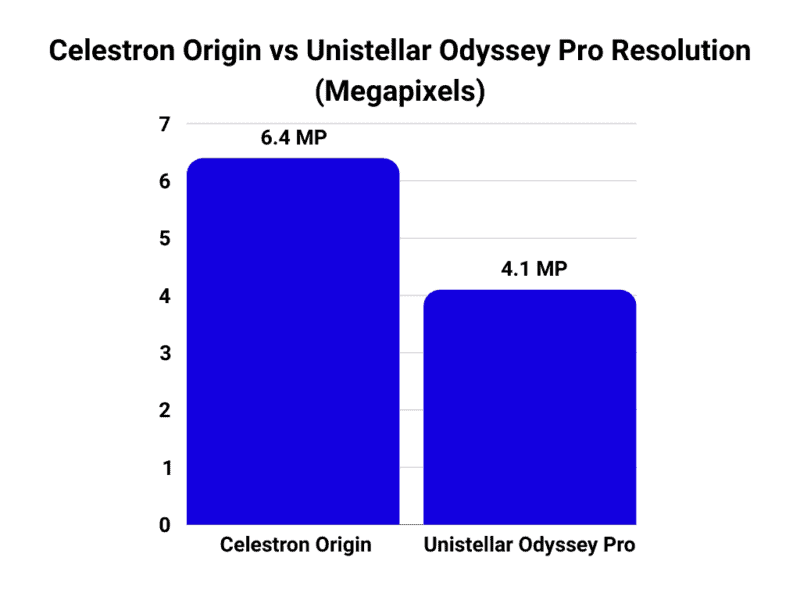
Size and Weight
The Celestron Origin weighs 18.9kg (41.6 lb) and has dimensions of 122 x 66 x 61 ((H x W x L in cm).
The Unistellar Odyssey Pro weighs 4kg (8.8 lb) and has dimensions of 13 x 20 x 43 ((H x W x L in cm).
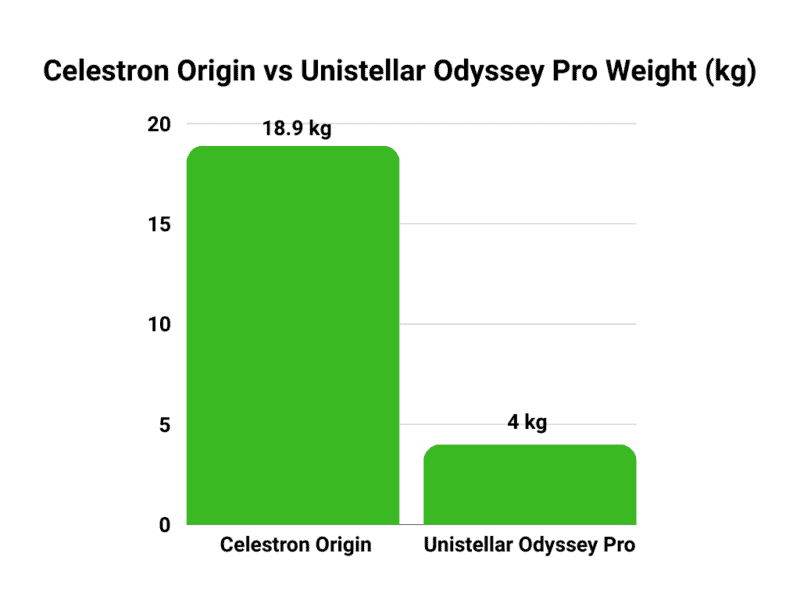
Price and Value for Money
The Celestron Origin and the Unistellar Odyssey Pro both cost $3,999.
Note, these may vary so check the links to compare retailers if thinking about buying.
Specifications
| Celestron Origin | Unistellar Odyssey Pro | |
|---|---|---|
| Year | 2024 | 2024 |
| Aperture | 152mm (6 inch) | 85mm (3.3 inch) |
| Focal Length | 335mm | 320mm |
| Focal Ratio | f/2.2 | f/3.7 |
| Limiting Magnitude | 13.61 | 12.35 |
| OTA type | Rowe-Ackermann Schmidt Astrograph | Reflector |
| Eyepiece | No | Yes |
| Field of View | 1.27° x 0.85° | 0.56° x 0.75° |
| Resolution | 6.4MP | 4.1MP |
| Sensor Size | 3096 x 2080 | ? |
| Sensor | Sony IMX178 | Sony IMX615 |
| Pixel Size | 2.4μm | 1.45μm |
| Image Formats | Raw | FITS, TIFF, PNG, JPEG |
| Mosaic Mode | No | No |
| Size (H x W x L) cm | 122 x 66 x 61 | 13 x 20 x 43 |
| Weight | 18.9kg (41.6 lb) | 4kg (8.8 lb) |
| Mount | Included | Included |
| Tripod | Included | Included |
| Battery Life | 6 hrs | 5 hrs |
| Internal Storage | unknown | 64GB |
| Dew Control | Built-in | None |
| Retail Price* | $3,999 | $3,999 |
Unistellar Odyssey Pro vs Celestron Origin Verdict
Overall, the Celestron Origin will be right for you if you are looking for the best option in terms of actual astrophotography and are ok with the additional weight, reduced portability, and lack of eyepiece.
The Unistellar Odyssey Pro will be right for you if you would value the additional experience that comes with the eyepiece, and also something that is easier-to-use, and more convenient in terms of portability and storage.
|
$3,999.00
|
$5,959.00
|
Related content and more information
- Best Smart Telescopes Comparison
- Unistellar website
- Odyssey Pro review
- Celestron Origin website
- Celestron Origin review
- Celestron Origin vs Dwarflab DWARF II
- Celestron Origin vs Unistellar eQuinox
- Celestron Origin vs Unistellar eQuinox 2
- Celestron Origin vs Unistellar eVscope 2
- Celestron Origin vs Unistellar Odyssey


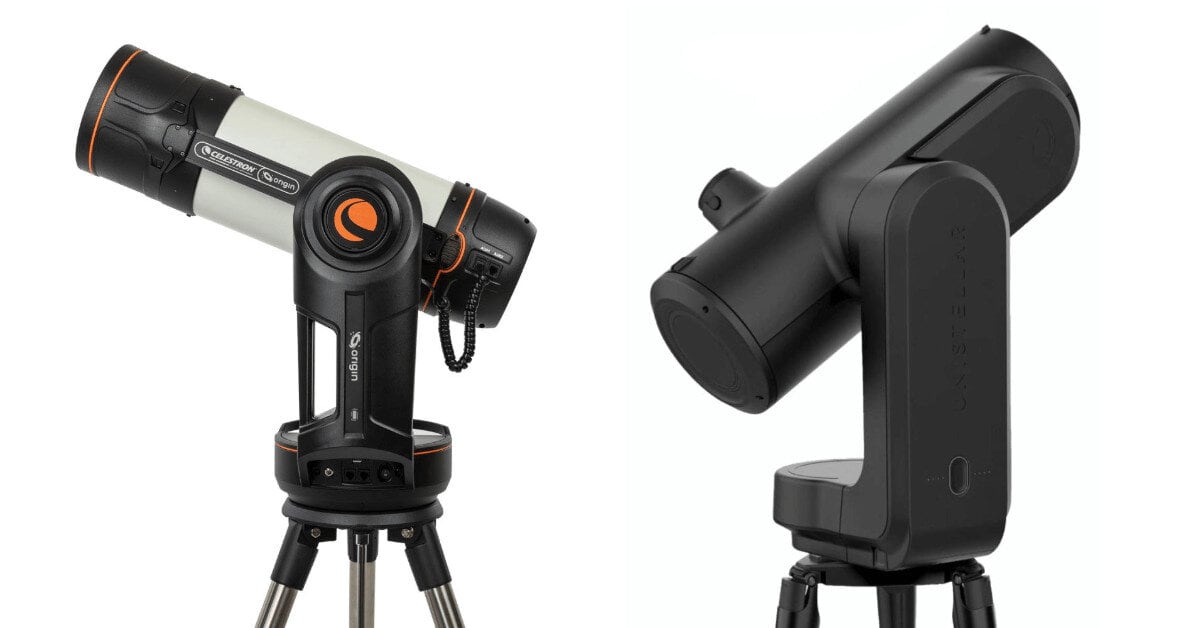
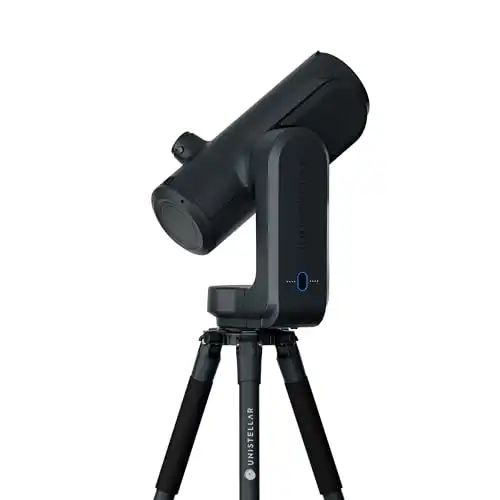
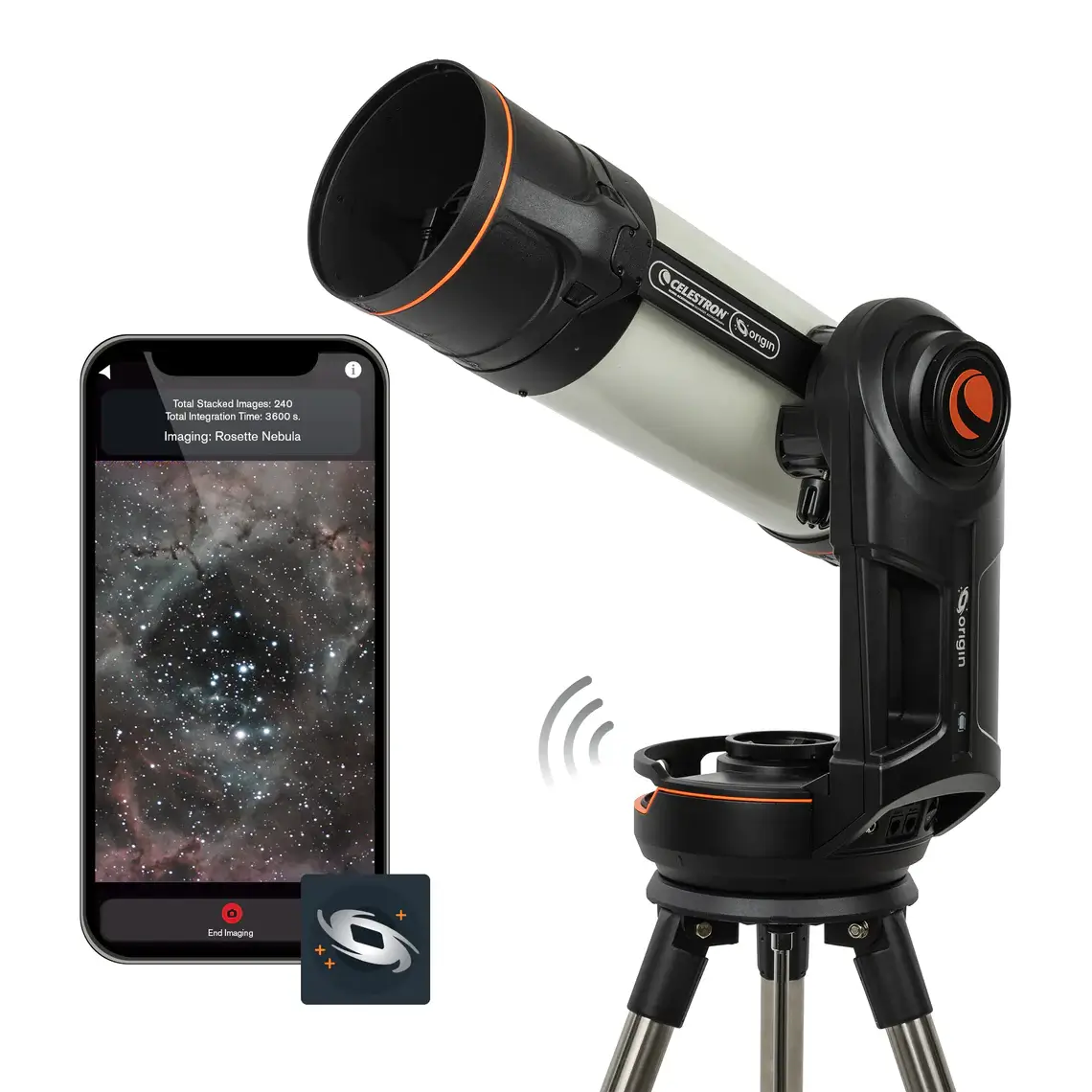

I’ve had the Odyssey Pro for 2 months now and am having a blast. My choice came down to these two and ease of use and eyepiece view sharing won me out. Plus the backpack carry suited my needs better.
What do I still wish for? Some upgrades to the software – such as to allow for mosaic mode for larger targets and allow for multi-night image capture and combining.
Learning the ins and outs of the software takes a little effort such as internet downloading and clearing the memory storage took a while to figure out, and very slow, but work just fine. I learned the trick is to download often, and that the scope will still work just fine and download an image to your phone even if the memory is full.
Awesome! Thanks for sharing, Austin.